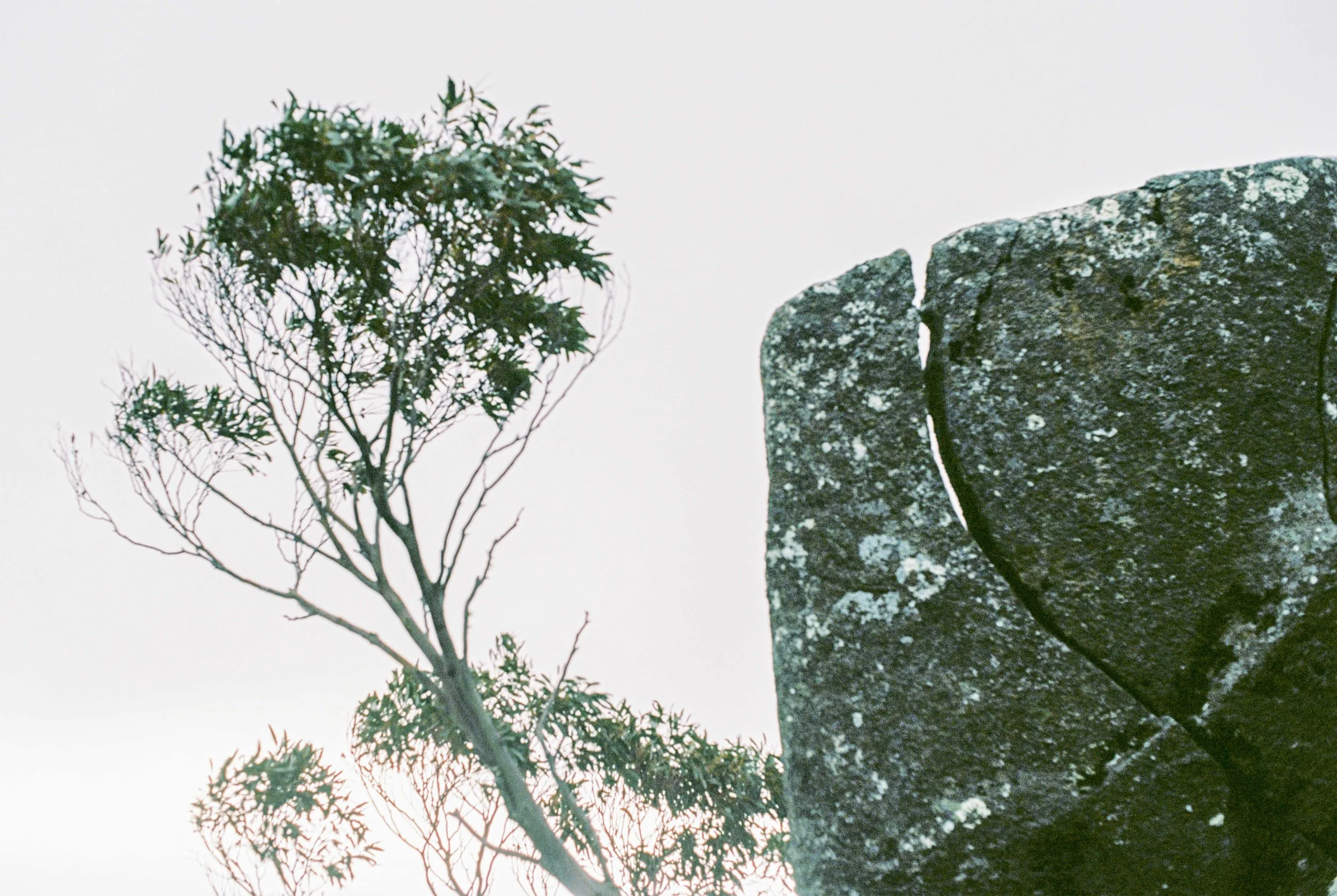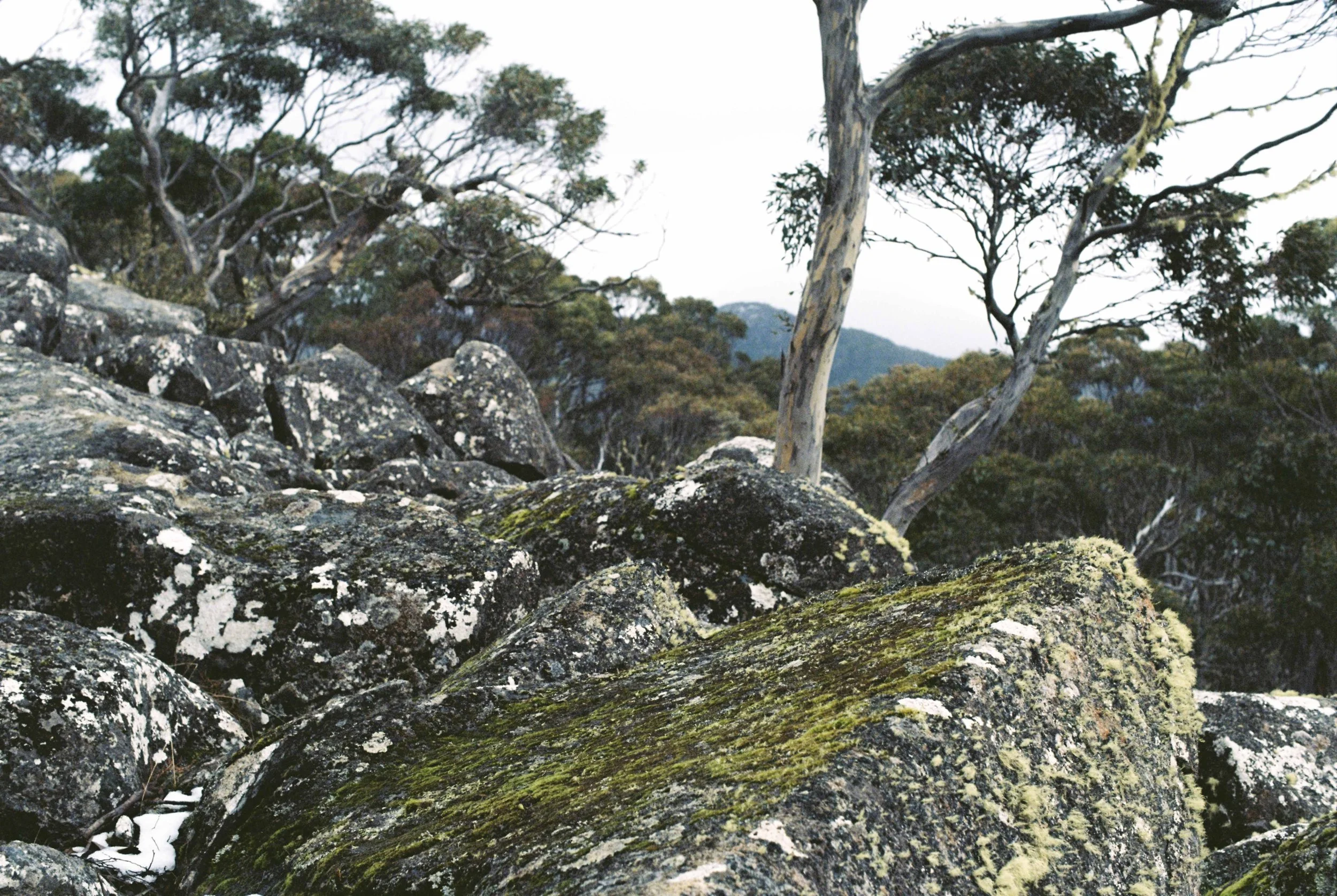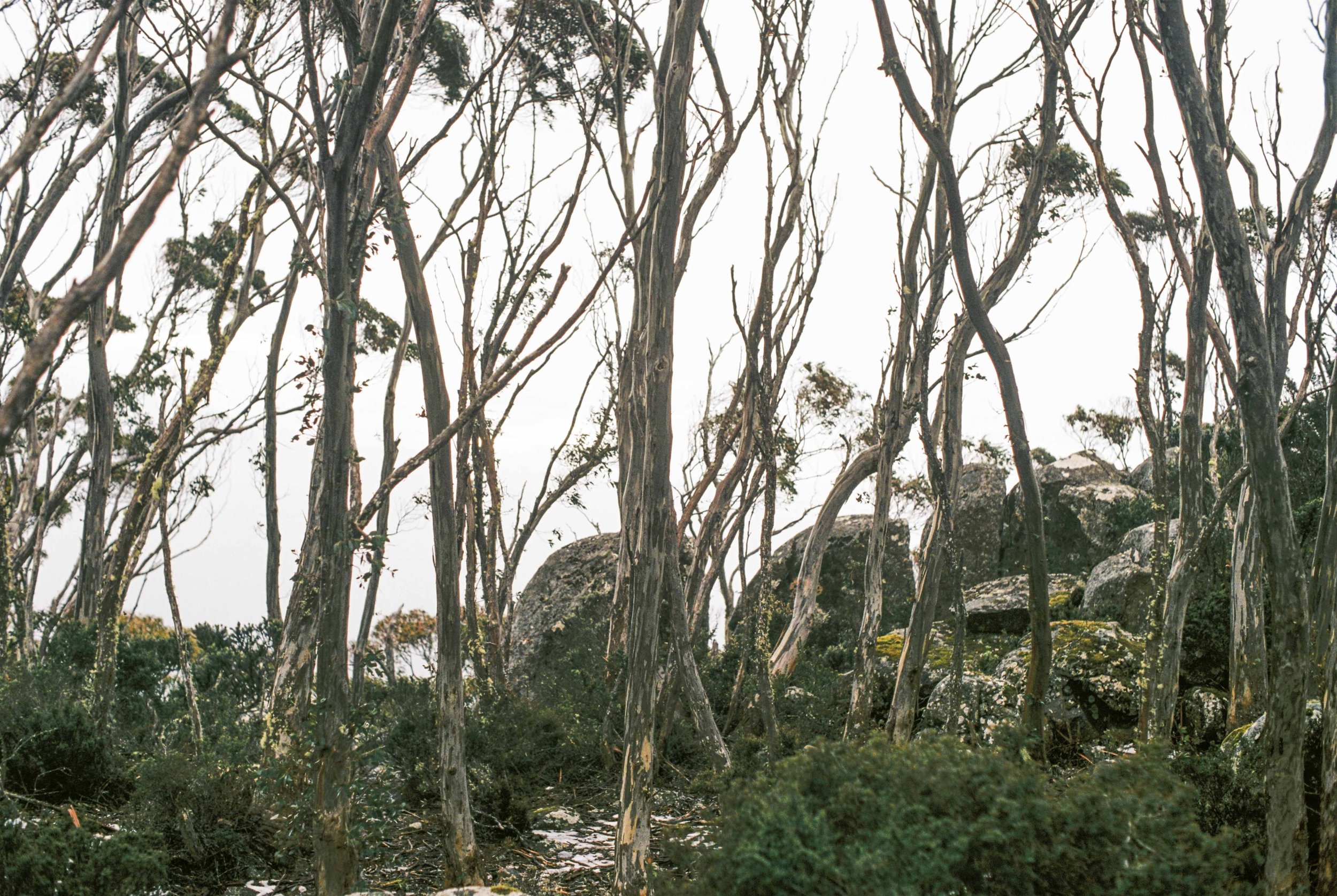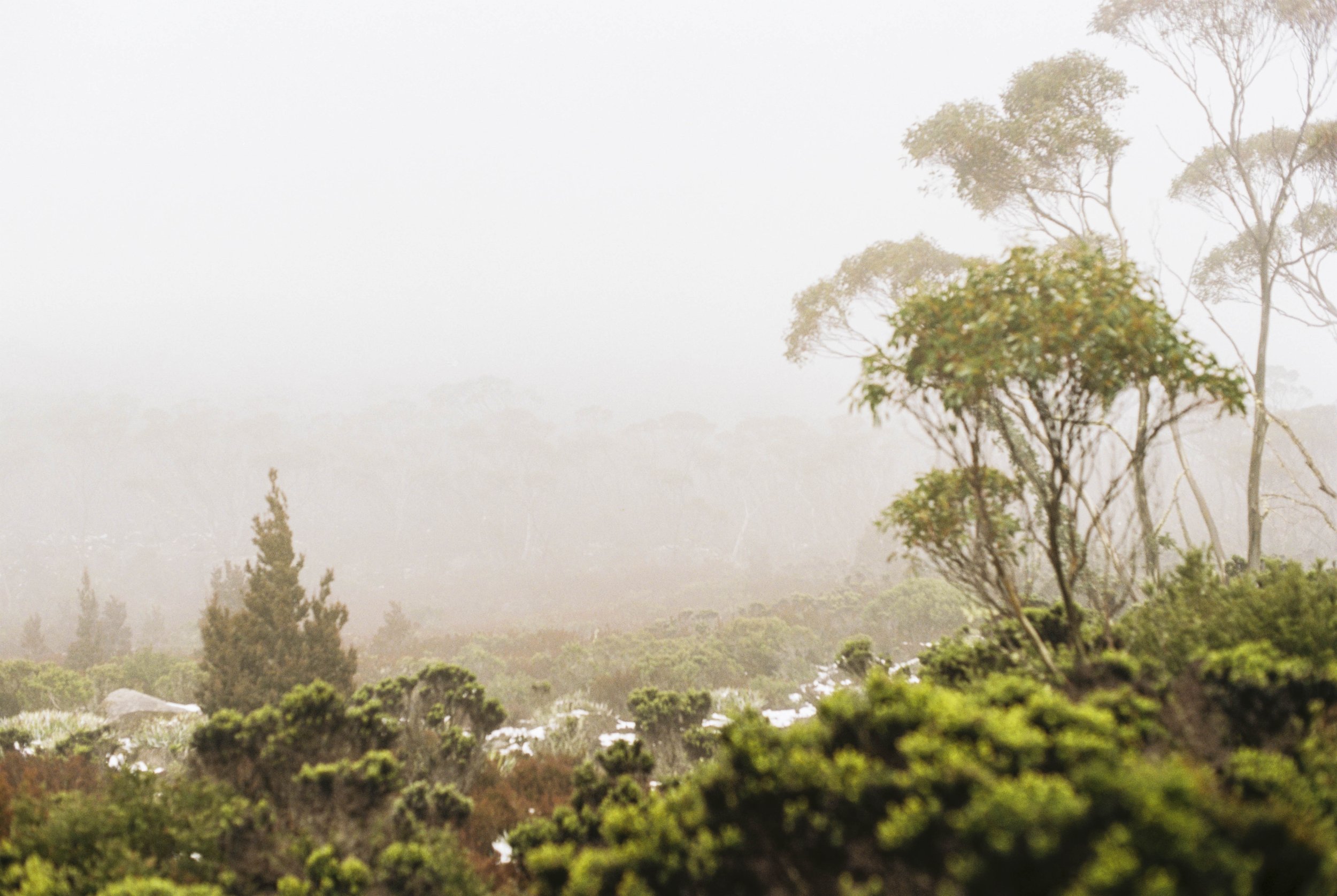Is it broken if it has a big crack in it?
Whale rock and snowgum on kunanyi. Pentax MX, Ektar 100, August 2022.
Well, if it is a bone in the body and it has a crack in it, it is said to be broken, fractured. But there are many different kinds of fractures. Some are hairline cracks in our bones, which heal on their own, given sufficient rest and support. Other fractures need surgical help. Most breaks in our bones heal with time. However, the broken bone that’s healed is not the same bone as before. Forever there will remain a line of weakness in it.
Most things that break in the bush are not bones, but personal items people carry with them. Buckles, straps, stitching, plastic clips can all break, glue can give way with time. Things that are deemed essential items wear with use and one day, fail. Often, the problems these failures cause are tragic and hilarious at the same time.
Mossy boulder field, kunanyi. Pentax MX, Ektar 100, August 2022.
When an essential part of our kit breaks in the bush, whether it’s our stove conking out or our tent pole snapping in the wind, it can be a great cause of frustration to the user of the essential item, and potentially quite a bit of mirth for the surrounding party members. I’ll never forget the day when my friend David forgot to bring his tent pole to a bush doof and instead he used a supple branch with the leaves on it as substitute. His tent didn’t look quite right, and there was quite a bit of foliage in the vestibule, but it was a whole lot better than it would have been without the branch. At least the tent was standing.
I’ve seen soles of boots peel off, to be held on for the remaining five days of the trip through the wilderness with duct tape and cable ties. I have broken the bolt on the waistbelt of my pack by overloading my WE Lost World with 42 kg on our way out to Federation Peak and watched in amazement as my friend Dan Pan the handy-man lashed the waistbelt back on with metres of 3mm cord. Other times, I’ve been grateful for adhesive patches to repair my broken sleeping mattress so I could get a good night’s rest.
A basic repair kit containing knife, lighter, tape, cord, cable-ties, patches and glue will go a long way to solve a lot of unexpected problems we may encounter out in the bush.
Snowgum forest and boulder field, kunanyi. Pentax MX, Ektar 100, August 2022.
The most susceptible item to break in the Tassie bush is our clothing.
The scrub in the sub-alpine regions tends to be woody and it doesn’t break and it doesn’t bend. And most of it is rather sharp and prickly. Things tend to get snagged on it. Woolen long johns will get shredded within hours. Gaiters, boots and sturdy pants are essential. Although there is a story of Olegas Truchanas walking out from the Serpentine River after he lost his kayak and all his gear including his pants down a waterfall, by stepping through the arms of his raincoat. So pants are not essential but come highly recommended.
Pants tend to wear out on the bottom and the knees. These are the places that are most likely to get holes in them. So if we can reinforce, or patch these areas on our garments, we can extend the lifetime of our clothing many times over.
Scoparia, the bushwalkers friend and foe. Pentax MX, Ektar 100, February 2022.
So if our item has a hole in it, it’s worth having a crack at patching it. Tears in puffy jackets can be repaired by applying an adhesive patch, or silicon gel and a patch. A jumper can be darned or knitted, and pants can have patches sewn on them. It’s a bit of work, but I wear my patches with pride. Just because something has a hole in it, it doesn’t mean it’s broken. Just how our bone can heal after a fracture, our clothes can heal too, they just need our help.
Mist on kunanyi… Pentax MX, Ektar 100, August 2022.
But there comes a time when the patch, no matter how resilient, gets a hole in it.
In this case, should we patch the patch?
The answer is up to you, my dear reader. In theory there is no limit to how many patches we can put over each other to cover a hole. However, if a garment contains more patches than original material, it might be time to let go.
Or it might be time to find another patch.
-A.S. Lenah Valley, 21/8/22.
Afternoon light across the Cracroft Plains (burnt in 2019). Pentax MX, Ektar 100, Feb 2022.






